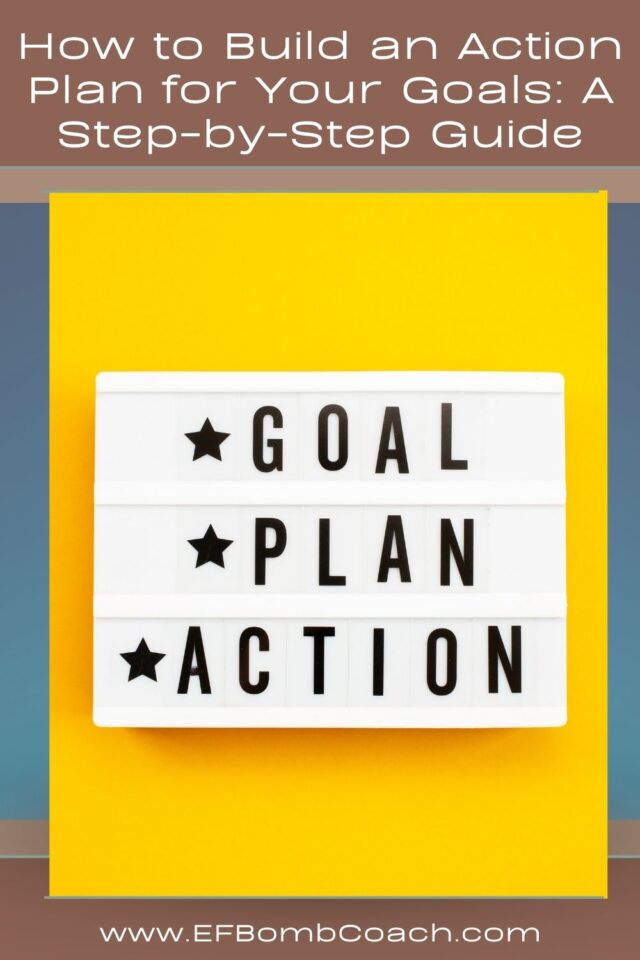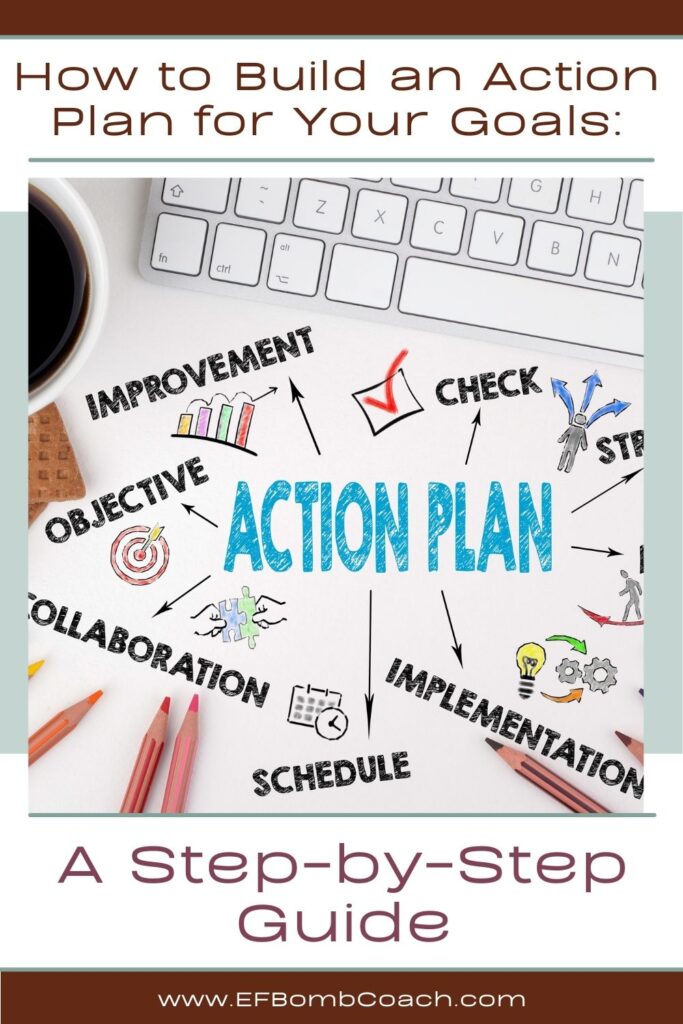How to Build an Action Plan for Your Goals: A Step-by-Step Guide
Creating an action plan is essential for turning your goals into achievements. A well-structured plan outlines clear steps and deadlines, making it easier to track your progress and stay motivated. Whether your goals relate to your career, personal development, or fitness, having a roadmap significantly increases your chances of success.
Prefer to listen rather than read? Press play below.
For neurodivergent people creating an action plan can feel both empowering and intimidating. The key is to view the plan as a guide rather than a rigid rulebook. It’s okay to tweak it as you go! Flexibility isn’t failure—it’s a strength.
The process starts with setting specific, measurable goals. Once your goals are defined, breaking them down into smaller, actionable steps helps you manage tasks effectively. This approach not only simplifies the journey but also allows you to celebrate small victories along the way.
As you work through your action plan, regularly reviewing and adjusting your strategy will keep you aligned with your objectives. Embrace flexibility, as setbacks may arise. Keeping your plan dynamic ensures you stay committed and ready to adapt to changes while continuing to strive for your desired outcomes.

Setting Clear and Achievable Goals
Creating clear and achievable goals is essential for effective planning. This involves using specific criteria to ensure your objectives are not only well-defined but also practically attainable. Use whatever goal-planning method works for you. The SMART (or SMARTER) goal framework is the go-to for most people, but there are others: Reverse Goal Setting, Goal Stacking, HARD goals, Clear's 4 Laws of Behavior Change, and the 90-day Goal framework.
If all of these frameworks feel too restrictive, try using a “why ladder.” Start with a broad goal, like “improve my health,” and ask yourself why this matters. Each answer narrows your focus until you arrive at a more specific and meaningful goal. For example: “Improve my health” → “Feel more energized” → “Be more productive”
Before you can create an action plan, you need to know what your goals are. Make sure they are clearly defined. You also need a way to measure or track them so you can monitor your progress and see your success.
Breaking Down Goals into Actionable Steps
Now that you know what your goals are, let's talk about how we can achieve them. Breaking your goals into smaller, actionable steps makes them less daunting. Start with your long-term objectives and identify the main tasks required to achieve them.
Make your tasks as small as possible. It might feel silly at first, but it's a way to help you quickly build momentum.
Create a list of these tasks and order them by priority. Focus on what needs to happen first to build that momentum.
Pro tip: If prioritizing feels overwhelming, try using a “brain dump” method. Write down every task that comes to mind, then group similar ones together. Once you see patterns, it’s easier to decide what comes first.
For each task, determine a timeline and resources required. Use a project management tool, or even a simple checklist, to track your progress. This method allows you to monitor accomplishments, making large goals feel manageable.
Regularly review and adjust your plan as needed, ensuring it remains aligned with your long-term vision.

Want to learn more about executive functioning? Take my FREE course.
Planning Your Actions
Creating an effective action plan involves systematically organizing tasks and efficiently using available resources and time. For those who struggle with executive function, use “time-blocking light.” Instead of scheduling every minute, assign broad themes to parts of your day. For example, “morning for creative tasks, afternoon for admin.” This keeps you structured without feeling trapped.
Focusing on task prioritization and resource allocation is essential for achieving your goals.
Prioritizing Tasks
Identifying which tasks require immediate attention is vital for your action plan. Start by listing all the tasks related to your goals. You can use methods like the Eisenhower Matrix, which categorizes tasks into four quadrants:
- Urgent and Important: Do these tasks first.
- Important, Not Urgent: Schedule these tasks.
- Urgent, Not Important: Delegate if possible.
- Not Urgent, Not Important: Consider eliminating these.
Assign a priority level to each task based on urgency and importance. This clarity helps you focus your efforts on what will drive the most impact toward your goals.
If prioritization feels difficult, assign tasks a “fun factor.” For example, rank how enjoyable or interesting each task is. Pair a high-priority, low-fun task (like scheduling appointments) with a low-priority, high-fun one (like reorganizing your workspace). This keeps things balanced and engaging.
Allocating Resources and Time
Next, assess the resources necessary for each task. This includes budget, tools, and anything else, such as outside help. Create a resource list where you detail:
- Task Name: The specific action required.
- Required Resources: Any tools or materials needed.
- Estimated Time: How long each task will take.
Use a timeline or Gantt chart to visualize your action plan. Be realistic about how much time you can dedicate based on your schedule. Regularly review and adjust your allocations as necessary to stay on track.

Implementing Your Action Plan
Taking steps to put your action plan into practice is crucial for reaching your goals. This involves actively pursuing each task and regularly checking in on your progress.
Taking Initiative
Taking initiative means starting your action plan without delay. Let's face it – most of us procrastinate. Task initiation can be tough, even if the task is something you want to do.
Begin each day by focusing on the highest priority tasks. This approach helps build momentum, making it easier to tackle subsequent steps. And even if you end up NOT doing anything else, you've still accomplished something that will get you closer to your goal.
Struggle with task initiation? Try the “5-minute rule.” Commit to working on a task for just five minutes. Often, starting is the hardest part. Once you begin, momentum usually carries you further than expected.
Don’t wait for the perfect moment; take the first step now.
Monitoring Progress
Regularly monitoring your progress helps you stay on track. Set up a schedule for reviews. Weekly or bi-weekly check-ins work well. During these reviews, assess which tasks have been completed and identify any obstacles.
For many neurodivergent people, visual tracking methods can be especially motivating. Use colorful sticky notes on a wall to represent each step. Move them from “to do” to “done” for a dopamine boost.
Tracking Methods:
- Journaling: Document your daily efforts and thoughts.
- Progress Charts: Visual tools can help illustrate accomplishments.
- Accountability Partners: Share your goals with a friend or mentor who can offer support and feedback.
Adjust your action plan as needed based on your assessments. This ensures you are responsive to challenges and can realign with your goals effectively. Keeping a close eye on your efforts keeps motivation high.

Did you know I have a membership for women who want to improve their executive function skills? Check it out here.
Overcoming Challenges and Setbacks
Challenges and setbacks are common in the pursuit of goals. Addressing these issues proactively can help you stay on track and maintain motivation.
Anticipating Potential Obstacles
Identifying potential obstacles before they arise is crucial. That way, you're not blindsided when then occur. Common obstacles include time constraints, financial limitations, or a lack of necessary skills.
- Make a List: Write down possible challenges related to your goals.
- Assess Likelihood: For each challenge, determine how likely it is to occur and its potential impact.
- Plan Solutions: Develop strategies for how you will address these challenges if they arise.
Instead of viewing obstacles as problems, reframe them as “puzzle pieces” you get to solve. For instance, if energy levels fluctuate, create a “low-energy task list” with easy wins like organizing a single drawer or drafting a quick email. These keep you productive on harder days.
By preparing for these scenarios, you can create a more resilient action plan that accommodates unforeseen circumstances.
Adapting to Changes
Flexibility is essential in overcoming setbacks. Change can be unsettling, but it’s also an opportunity to explore new strategies. If your original plan isn’t working, try asking: “What’s one small thing I can tweak today?” Small shifts can have a big impact over time.
Changes in circumstances can affect your goals, so remaining adaptable can help you navigate difficulties.
Embracing change and being ready to pivot can transform setbacks into valuable learning experiences.
Remember: An action plan isn’t about doing everything perfectly. It’s about creating a path forward that works for you, celebrates progress, and grows with you. Think of it as a living document—always evolving, just like you.








